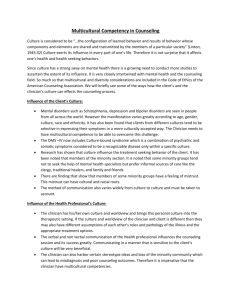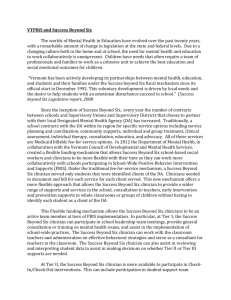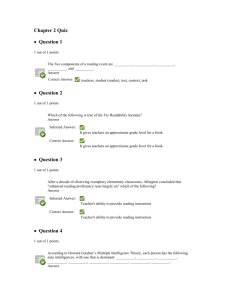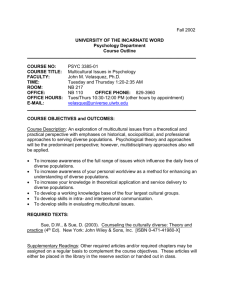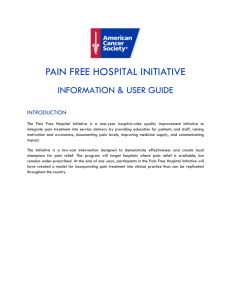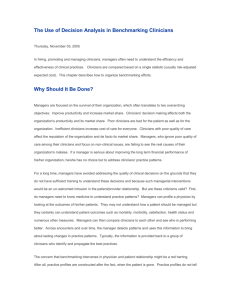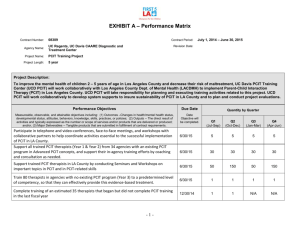*Cultural competence * is formed through specific training
advertisement
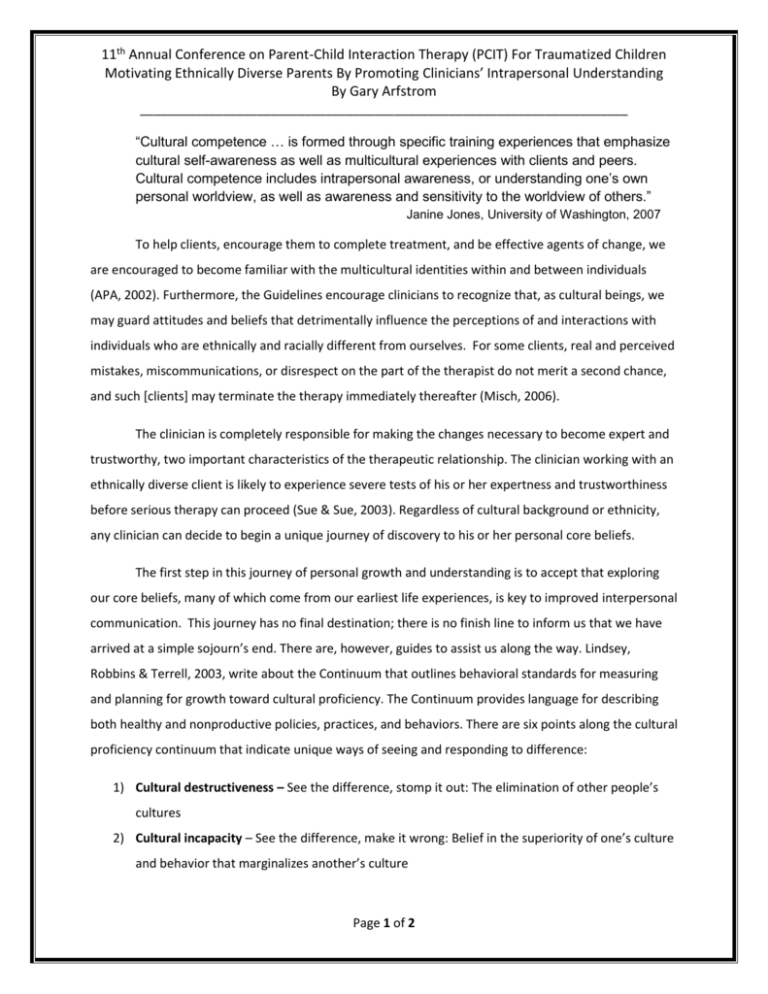
11th Annual Conference on Parent-Child Interaction Therapy (PCIT) For Traumatized Children Motivating Ethnically Diverse Parents By Promoting Clinicians’ Intrapersonal Understanding By Gary Arfstrom _______________________________________________________________________ “Cultural competence … is formed through specific training experiences that emphasize cultural self-awareness as well as multicultural experiences with clients and peers. Cultural competence includes intrapersonal awareness, or understanding one’s own personal worldview, as well as awareness and sensitivity to the worldview of others.” Janine Jones, University of Washington, 2007 To help clients, encourage them to complete treatment, and be effective agents of change, we are encouraged to become familiar with the multicultural identities within and between individuals (APA, 2002). Furthermore, the Guidelines encourage clinicians to recognize that, as cultural beings, we may guard attitudes and beliefs that detrimentally influence the perceptions of and interactions with individuals who are ethnically and racially different from ourselves. For some clients, real and perceived mistakes, miscommunications, or disrespect on the part of the therapist do not merit a second chance, and such [clients] may terminate the therapy immediately thereafter (Misch, 2006). The clinician is completely responsible for making the changes necessary to become expert and trustworthy, two important characteristics of the therapeutic relationship. The clinician working with an ethnically diverse client is likely to experience severe tests of his or her expertness and trustworthiness before serious therapy can proceed (Sue & Sue, 2003). Regardless of cultural background or ethnicity, any clinician can decide to begin a unique journey of discovery to his or her personal core beliefs. The first step in this journey of personal growth and understanding is to accept that exploring our core beliefs, many of which come from our earliest life experiences, is key to improved interpersonal communication. This journey has no final destination; there is no finish line to inform us that we have arrived at a simple sojourn’s end. There are, however, guides to assist us along the way. Lindsey, Robbins & Terrell, 2003, write about the Continuum that outlines behavioral standards for measuring and planning for growth toward cultural proficiency. The Continuum provides language for describing both healthy and nonproductive policies, practices, and behaviors. There are six points along the cultural proficiency continuum that indicate unique ways of seeing and responding to difference: 1) Cultural destructiveness – See the difference, stomp it out: The elimination of other people’s cultures 2) Cultural incapacity – See the difference, make it wrong: Belief in the superiority of one’s culture and behavior that marginalizes another’s culture Page 1 of 2 11th Annual Conference on Parent-Child Interaction Therapy (PCIT) For Traumatized Children Motivating Ethnically Diverse Parents By Promoting Clinicians’ Intrapersonal Understanding By Gary Arfstrom _______________________________________________________________________ 3) Cultural blindness – See the difference, act like you don’t: acting as if the cultural differences you see do not matter, or not recognizing that there are differences among and between cultures 4) Cultural precompetence – See the difference, respond inadequately: Awareness of the limitations of one’s skills or an organization’s practices when interacting with other cultural groups 5) Cultural competence – See the difference, understand the difference that difference makes: Interacting with other cultural groups using the following five essential elements of cultural proficiency as the standard for individual behavior: a. Name the differences: Assess culture b. Claim the differences: Value diversity c. Reframe the differences: Manage the dynamics of difference d. Train about differences: Adapt to [accept the value of] diversity e. Change for differences: Institutionalize cultural knowledge 6) Cultural proficiency – See the difference and respond with positive affirmations: Esteeming culture, knowing how to learn about individual and organizational culture, and interacting effectively in a variety of cultural environments “Estimates indicate that approximately 50% of all ethnic minority clients quit counseling after the first session feeling they will not secure what they want from the helper” (Rosenthal, 2008). Sue & Sue, (2003. p. 18) found culturally competent counselors who strive to actively develop and practice appropriate, relevant, sensitive intervention strategies and skills in working with his or her culturally different clients improves the percentage of clients who continue treatment. Fluently speaking the first language of English language learning consumers may be the single most important area of expertise of the clinician; however, even this may not be enough. If a male Caucasian therapist has not addressed his own most guarded inner beliefs then he may not truly understand the issues of a Caucasian single mother of three who has not graduated high school, and lives with her children well below the poverty level. It is a personal choice to become a competent multicultural clinician. Every day this choice may be the single most important decision each mental health professional has to make. Page 2 of 2


